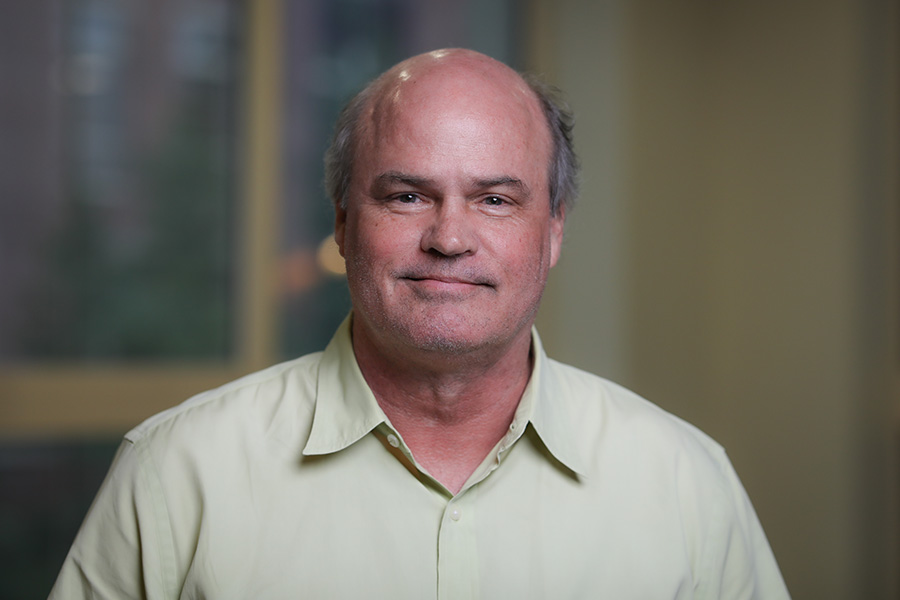Preventing tragedy: FSU expert examines suicidal motives in mass shootings, terrorism

According to the Gun Violence Archive, the United States reported 656 mass shootings in 2023. When it comes to understanding and preventing tragedies such as murder-suicides, mass shootings and terrorism, some may question why assailants in these cases are motivated to kill.
A Florida State University psychologist is shedding light on the role that suicidal tendencies may play in many scenarios that are widely perceived as homicidal.
Robert O. Lawton Distinguished Professor of Psychology Thomas Joiner directs the Laboratory for the Study and Prevention of Suicide-Related Conditions and Behaviors at FSU, which focuses primarily on studying the nature, causes and management of suicidal behavior and related disorders, including eating, mood and personality disorders.
Joiner is available to speak to reporters looking for context on suicide and suicide prevention at joiner@psy.fsu.edu .
If you or someone you know is struggling with suicide, dial 988 to reach the National Suicide and Crisis Lifeline and speak with a trained crisis counselor. Prefer to text? Visit crisistextline.org.
Joiner spoke about his latest book, “The Varieties of Suicidal Experience: A New Theory of Suicidal Violence,” and his research in the field:
When did you begin working on your book, “The Varieties of Suicidal Experience: A New Theory of Suicidal Violence,” and what inspired you to write it?
Around 20 years ago, a theory of suicidal behavior was crystallizing in my mind. It developed into the Interpersonal Theory of Suicide, and it has gone on to be arguably the world’s most influential suicide theory. As I described the theory in presentations, a common question was “What about murder-suicide?” or “What about suicide terror?” Back then, I demurred, stating the truth that I was uncertain as I had primarily focused on what one might term “conventional suicide.” However, I continued to mull the question and started to investigate it, specifically regarding murder-suicide. That was an intellectual adventure, as going in I expected around half of the cases to show that murder preceded suicide, and the other half of cases showcasing the opposite. Put differently, murder-first-then-suicide scenarios would involve someone perpetrating a homicide and subsequently, perhaps out of a sense of guilt, remorse, fear of imprisonment, etc., dying by suicide. The scenario of suicide-planned-first-then-murder-is-conceived would involve people planning their suicide, then thinking that their death necessitates the death of others. I was surprised that this latter scenario occurred very regularly, whereas the “murder-first” scenario was quite rare. This culminated into a book called “The Perversion of Virtue: Understanding Murder-Suicide,” the idea that one or more of four virtues is used, or perverted, in justifying and planning the murder element that grows out of the decision to die by suicide.
My current book “The Varieties of Suicidal Experience,” applies this same kind of “suicide is primary” logic to a number of forms of violence — forms that are often construed, sometimes quite passionately, as having nothing to do with suicide.
The book presents a theory that a range of behaviors such as mass shootings, murder-suicide and terroristic acts are better understood as motivated by suicidal impulses than homicidal impulses. Why is this distinction important?
It makes sense of what is naturally viewed as senseless, and it points to what to do. In other words, suicide prevention therefore means prevention of these other forms of violence. In addition to murder-suicide, these forms of violence include suicide-by-cop, death row volunteering, running amok, physician-assisted suicide, suicide terrorism and most spree killings. If it is true that suicide is primary in all these forms of violence, then what we know about suicide prevention applies to these cases as well.
In your research for this book, what were you most surprised or intrigued to learn?
I am not sure I even knew death row volunteering existed, and then as I was looking into it, I was surprised by how clear it is that it is a form of suicide.
What do you hope people gain from reading your book?
Understanding of the seemingly incomprehensible, and an action plan: Implement ‘means safety’ — a collection of approaches that increase the distance between an at-risk individual and their intended suicide method — in creative and pervasive ways.
What is the most rewarding thing about your field of research?
To me personally, it’s facing — and at times even facing down — what is arguably the most fearsome of all human maladies.
For more information about Joiner’s research and the Department of Psychology, visit psychology.fsu.edu.

